CarEdge saved me over 4,500 dollars on a brand new Honda Pilot. I can't say thank you enough.
Price intelligence
Find a wide range of vehicle listings with market insights on new and used listings near you.
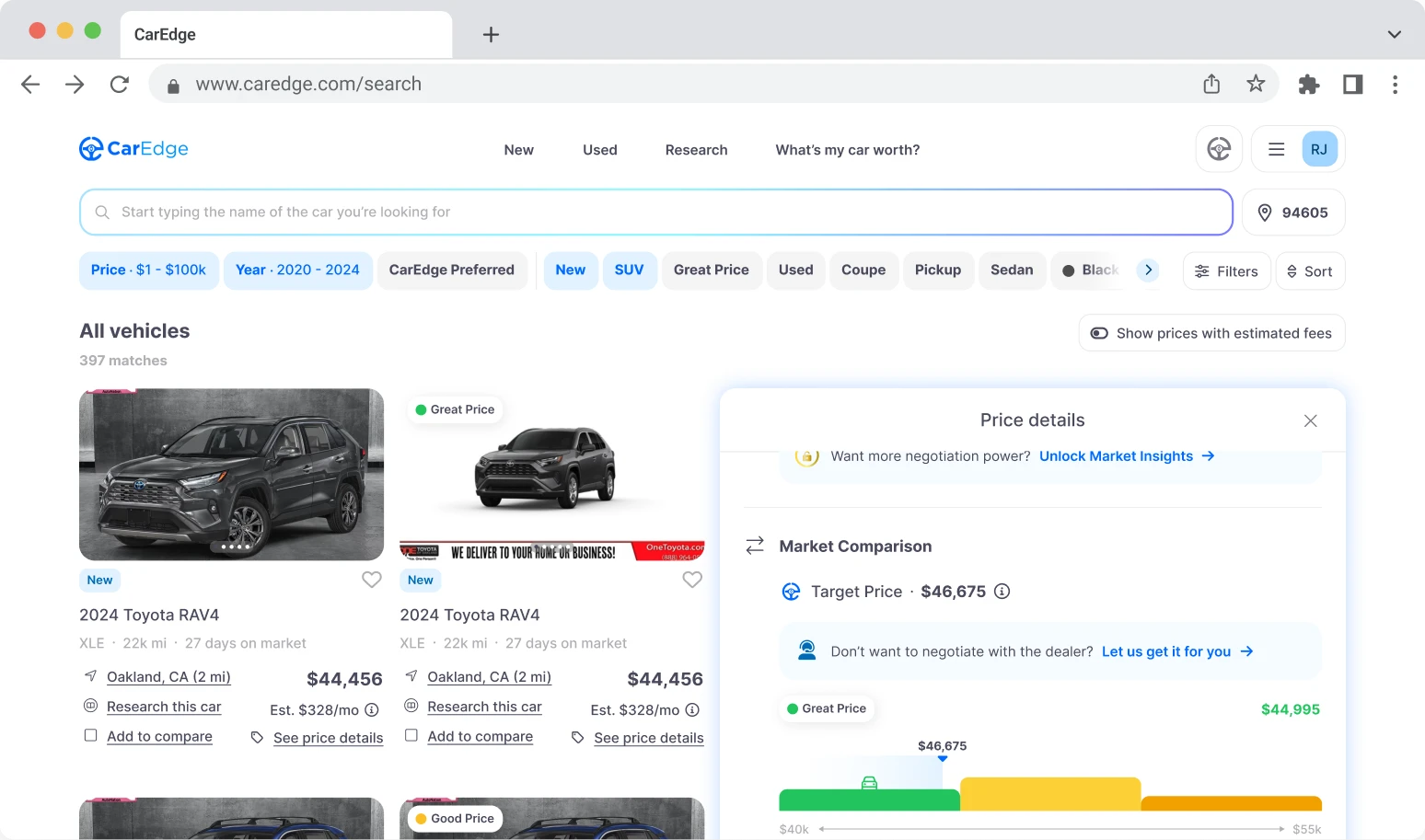

Help us personalize your CarEdge experience — it only takes a second.
Your answers help us personalize your CarEdge journey — we’ll follow up with tips and next steps that match your buying timeline.

Interest rates are rising, and inflation is at record highs, but deals can still be had when buying a new car. Every month, the team at CarEdge pores over the latest offers from every automaker. The result is a one-stop resource to share the very best new car deals with you.
Not finding what you’re looking for? We’ve included links to each automaker’s website. Check back frequently, as this living page will be updated regularly.
Check out these other CarEdge car buying resources:
The Best Auto Loan Rates Right Now
The Best Lease Deals This Months
These 5 Brands Are Negotiable Right Now
Finance Buick SUVs (Encore, Envision, Enclave) at 3.99% APR for 72 months.
Buick Encore: $179 per month for 24 months with $5,449 due at signing
Buick Envision: $279 per month for 24 months with $3,739 due at signing
Cadillac CT4: $439 per month for 36 months with $3,749 due
Cadillac XT4: $379 per month for 36 months with $3,579 due at signing
See Cadillac listings near you.

Best Chevrolet financing offer:
2.99% APR for 60 months for the Silverado 1500, Colorado and Equinox.
Chevrolet lease deals:
Chevrolet Trailblazer: $259 per month for 24 months with $3,109 due at signing
Chevrolet Blazer: $279 per month for 24 months with $2,369 due at signing
Silverado 1500 Crew Cab 4WD LT: $399 for 36 months with $3,579 due at signing
See details on Chevrolet deals.
Chrysler Pacifica Hybrid: $599 per month for 39 months with $5,499 due at signing
See details on Chrysler deals.

In February, Ford is advertising 3.9% APR for 60 months for select models
Learn more about Ford deals at Ford.com.
Best GMC financing offer:
2.99% APR for the GMC Sierra 1500
3.9% APR for the GMC Terrain
GMC lease offers:
GMC Acadia: $289 per month for 24 months with $2,309 due at signing
GMC Terrain: $279 per month for 24 months with $3,949 due at signing
Best Honda financing offers:
Honda Pilot, Passport, Ridgeline: 1.9% APR for 24 – 48 months
Best Honda lease offers:
Honda Civic: $269 per month for 36 months with $3,399 due
Honda CR-V: $349 per month for 36 months with $4,499 due
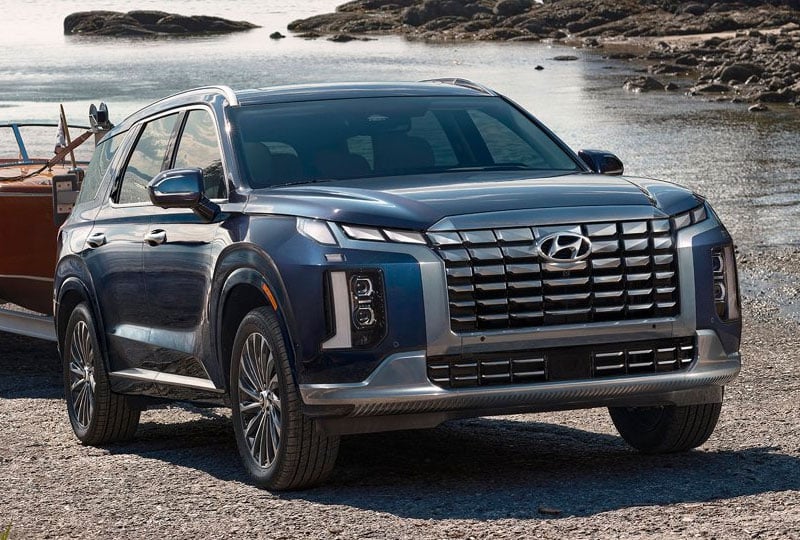
Hyundai lease offers this month are good, but the amount due at signing has increased this month.
Hyundai Venue: $151 per month with $3,281 due
Hyundai Elantra: $219 per month with $3,299 due
Hyundai Kona: $209 per month with $3,999 due
Hyundai Tucson: $279 per month with $3,999 due
Hyundai Santa Fe: $269 per month with $3,999 due
See details on Hyundai lease and finance deals.
Jeep leases are attractive in February.
Jeep Wrangler: $409 per month for 42 months with $5,099 due at signing
Jeep Compass: $347 per month for 42 months with $3,799 due at signing
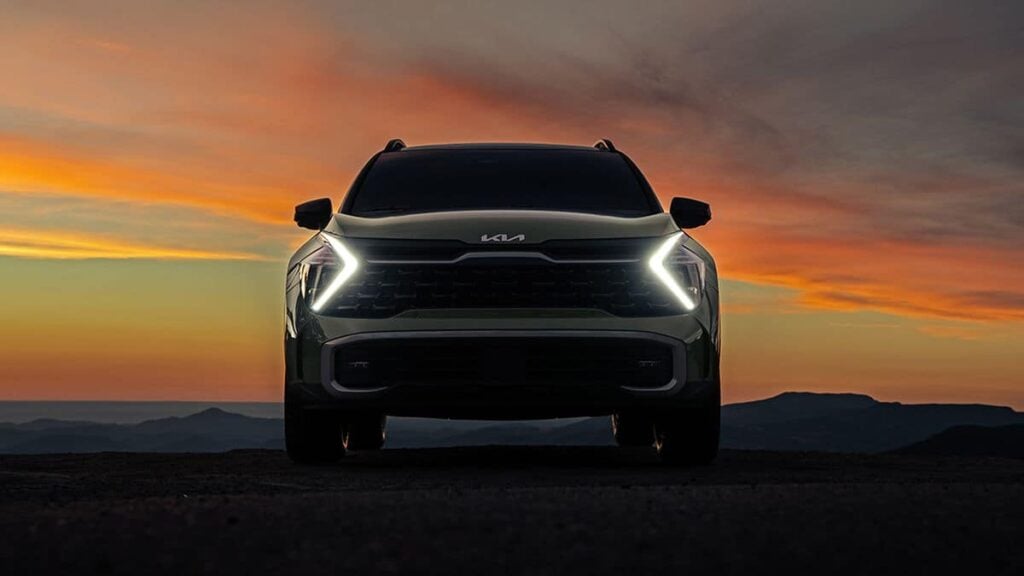
Best Kia financing offer:
2.9% APR for 48 months
Kia Forte
Kia Sorento (2022)
Kia Soul
Best Kia lease offers:
Kia Sportage: $279/month for 36 months with $3,499 due
Kia Seltos: $249/month for 36 months with $3,320 due
See details on Kia deals at Kia.com.
3.49% APR for 48 months for the RX.
$2,000 lease cash for select RX styles.
ES 250 AWD: $509/month for 39 months with $3,999 due
See details on Lexus deals at lexus.com.
Best Mazda financing offer:
2.49% APR for 36 months + NO payments for 90 days
Best Mazda lease offers:
Mazda CX-30: $239 per month for 24 months with $2,999 due at signing.
Mazda CX-5: $299 per month for 33 months with $3,499 due at signing.
See details on Mazda deals at Mazdausa.com.
0.0% APR for 36 months
1.9% APR for 36 months
Nissan Altima: $199 per month for 18 months with $2,309 due
Nissan Leaf: $269 per month for 36 months with $5,259 due
Nissan Rogue (AWD): $299 per month for 36 months with $3,459 due Nissan Murano (FWD): $299/month for 24 months with $2,099 due
Learn more about Nissan deals here.
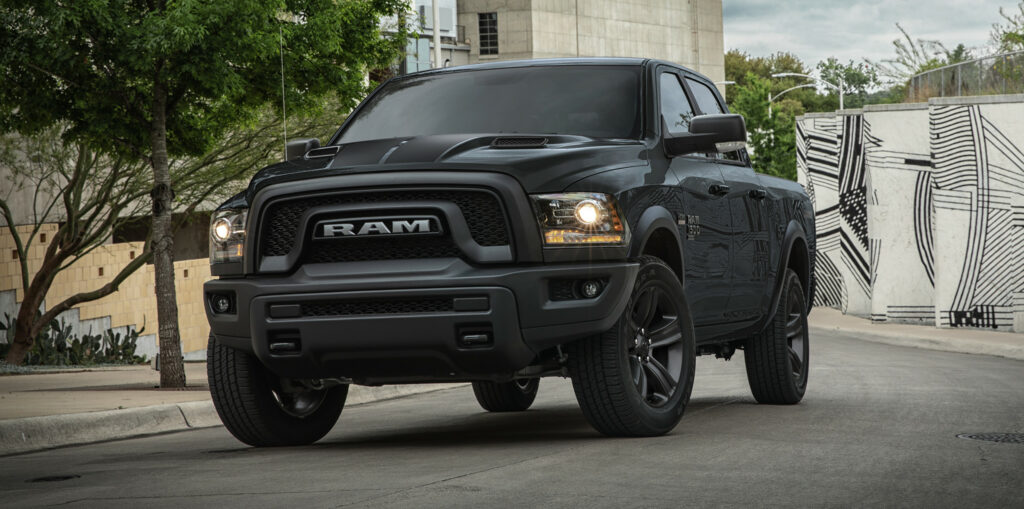
4.9% APR for 72 months and no payments for 90 days for the Ram 1500 and Ram 2500
$4,000 cash allowance for Ram 1500
Lease: Ram 1500: $309/month for 42 months, $5,499 due
Learn more about Ram deals at Ramtrucks.com.
Best Subaru financing offers:
2.9% – 3.9% APR for 48 months for these models:
The best Subaru leases:
Subaru Outback: $345 per month for 36 months with $3,515 due
Subaru Ascent: $359 per month for 36 months with $3,259 due
Best Toyota financing offers:
2.99% APR for 60 months
3.49% APR for 48 months
Toyota Corolla Cross: $331 per month for 39 months with $2,976 due
Toyota RAV4: $413 per month for 36 months with $3,063 due
Toyota Highlander: $393 per month for 39 months with $4,053 due
Learn more about Toyota deals here.
With interest rates rising and inflation putting pressure on automakers and their dealer networks, the only thing that could bring better new car deals would be plummeting demand. We’ve seen signs of weakening demand and higher new car inventory, but nothing considered drastic. Expect auto loan interest rates to climb in 2023. The best car deals in February won’t last.
These are the 5 car brands you CAN negotiate right now!
Thinking about factory ordering? These are the latest wait times our community is reporting.
These are the most marked-up new cars in 2022
Looking for something else? Visit our blog, or consult 1:1 with a real CarEdge Auto Expert to get customized help with your car deal. It could save you thousands!

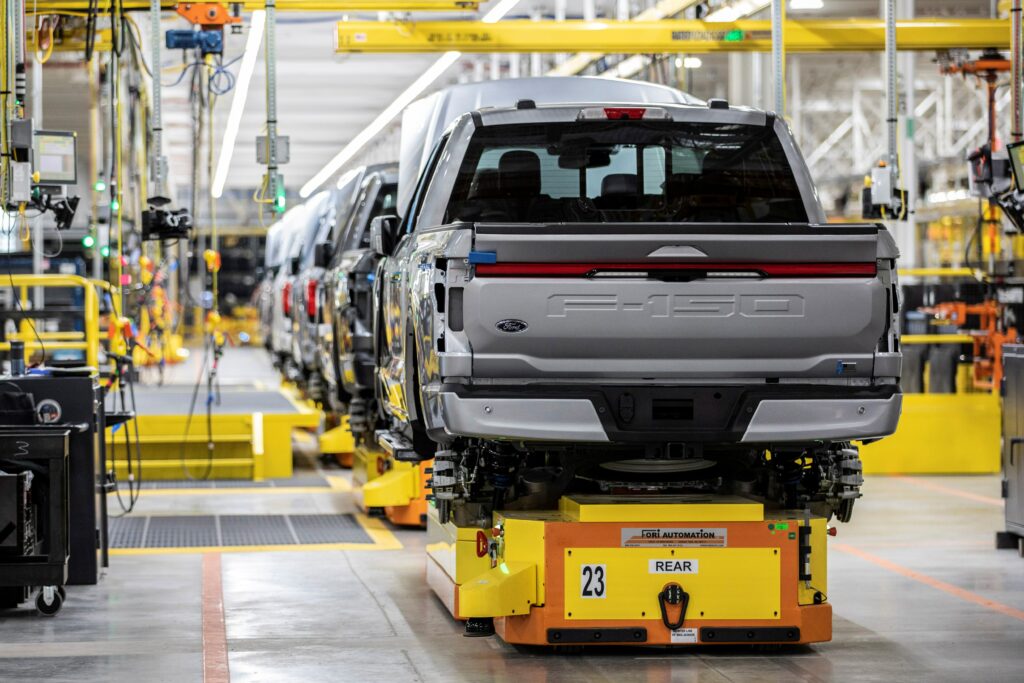
2025 Update: The average transaction price for an EV rose slightly last month. Check out the details below.
Car buying is the second biggest expense most consumers will ever make, and more drivers are getting squeezed into $1,000/month car payments. With an EV, you can save hundreds of dollars per month in fuel costs, but the upfront cost of getting into an electric car is substantial. Here’s the average price of an electric car today, and how much prices have increased over the past three years.
As of the most recent data from December 2024, the average transaction price for a new car (of any powertrain) was $49,740 according to Kelley Blue Book. That’s up slightly from the month prior. In December 2024, the average new electric car price was $55,544.
In 2025, the average price paid for a new EV is 12% higher than the overall new car market average. How does this compare to the recent past? In 2024, electric car prices averaged 16% more than the overall market average. In 2023, EV prices averaged more than 8% higher than the overall market.
EV prices appear to have stabilized, and remain a premium segment in most cases. It’s also true that overall new car prices are much higher than historical norms, regardless of powertrain. According to KBB, new EV pricing peaked in June 2022 at $66,997, and has fallen by $11,453 since.

An abundance of luxury options continues to keep the average price of an electric car well above gas counterparts. Affordable options like the Chevrolet Equinox EV have arrived, but so have expensive electric trucks like the Tesla Cybertruck and offerings from GM.
Electric truck prices are generally expensive (see electric truck prices here). For instance, the Chevrolet Silverado EV is not as affordable as originally claimed. Most electric trucks cost over $75,000 once trim and spec availability is considered.
Although the average EV sells for 12% more than gas-powered models, here’s a breakdown of the starting MSRP for the top 10 electric car models on sale right now. As you can see, not all EVs are quite this expensive:
The average starting price for the top 10 best-selling electric cars in America is $48,899, which is 10% lower than six months prior.
In January 2020, the average electric car price was $54,668, or 42% higher than the overall market average. By 2023, the average cost of a new EV was $53,376 or about 10% higher than the overall new car market. Of course, this reflects the overall rising prices in the broader new car market. Here’s how the average cost of an electric car has changed monthly from January 2020 to 2025.
| 1-2020 | 2-2020 | 3-2020 | 4-2020 | 5-2020 | 6-2020 | 7-2020 | 8-2020 | 9-2020 | 10-2020 | 11-2020 | 12-2020 | 1-2021 | 2-2021 | 3-2021 | 4-2021 | 5-2021 | 6-2021 | 7-2021 | 8-2021 | 9-2021 | 10-2021 | 11-2021 | 12-2021 | 1-2022 | 2-2022 | 3-2022 | 4-2022 | 5-2022 | 6-2022 | 7-2022 | 8-2022 | 9-2022 | 10-2022 | 11-2022 | 12-2022 | 1-2023 | 2-2023 | 3-2023 | 4-2023 | 5-2023 | 6-2023 | 7-2023 | 8-2023 | 9-2023 | 10-2023 | 11-2023 | 12-2023 | 1-2024 | 2-2024 | 3-2024 | 4-2024 | 5-2024 | 6-2024 | 7-2024 | 8-2024 | 9-2024 | 10-2024 | 11-2024 | 12-2024 | |
|---|---|---|---|---|---|---|---|---|---|---|---|---|---|---|---|---|---|---|---|---|---|---|---|---|---|---|---|---|---|---|---|---|---|---|---|---|---|---|---|---|---|---|---|---|---|---|---|---|---|---|---|---|---|---|---|---|---|---|---|---|
| Average EV Price | $54,669 | $56,326 | $56,059 | $57,757 | $58,863 | $57,480 | $57,346 | $57,346 | $54,381 | $52,947 | $53,117 | $53,811 | $57,750 | $57,491 | $56,503 | $56,059 | $56,140 | $58,914 | $56,110 | $57,540 | $56,312 | $55,625 | $56,437 | $63,821 | $62,876 | $64,807 | $66,386 | $65,094 | $64,553 | $66,997 | $66,645 | $66,524 | $65,291 | $64,249 | $65,041 | $61,448 | $58,725 | $58,385 | $58,940 | $55,089 | $55,488 | $53,438 | $53,469 | $52,212 | $50,683 | $51,715 | $52,362 | $53,611 | $55,353 | $53,707 | $54,021 | $55,252 | $56,648 | $56,371 | $56,520 | $56,575 | $57,580 | $56,902 | $55,105 | $55,544 |
| New Car Average | $38,747 | $38,550 | $38,812 | $39,904 | $39,138 | $39,731 | $39,512 | $39,571 | $40,159 | $40,770 | $40,937 | $41,335 | $41,248 | $41,366 | $40,680 | $41,172 | $41,534 | $42,633 | $43,056 | $43,418 | $45,031 | $46,026 | $46,329 | $47,243 | $46,404 | $46,082 | $46,223 | $46,676 | $47,275 | $48,043 | $48,182 | $48,301 | $48,094 | $48,281 | $48,681 | $49,507 | $49,388 | $48,763 | $48,008 | $48,275 | $48,528 | $48,808 | $48,334 | $48,126 | $47,899 | $47,936 | $48,247 | $48,759 | $47,401 | $47,244 | $47,218 | $48,368 | $48,389 | $48,424 | $48,166 | $47,870 | $48,397 | $48,623 | $48,724 | $49,740 |
We track EV market share monthly. Here’s where things stand today.
Regardless of whether you think an EV might be in your future, CarEdge Car Search is the best way to shop online with more transparent pricing, and auto industry insights dealers don’t want you to see. Check it out today!

General Motors finally released details about what could turn out to be the most important electric vehicle of the decade. Yes, Tesla pioneered the mass production of EVs in the 2010s, but GM intends to bring them to the masses with affordable pricing. Now that we know almost everything about the 2024 Equinox EV, how does it compare to the Chevy Bolt EV and EUV, and the many higher-priced electric crossovers on the road? Plus, we’ll also go over why I don’t think the Equinox EV will cost $30,000, despite GM’s comments.
Only two big questions remain after GM released details and new images of the Equinox EV in September. Although we don’t yet know exact pricing or battery capacity, the latest press releases have revealed a future-ready EV with great range, decent charging, and GM’s reiterated $30,000 price tag. Let’s dig into the details, and why I sincerely think this model alone will be a make-or-break moment for the electrification of America’s legacy automakers.
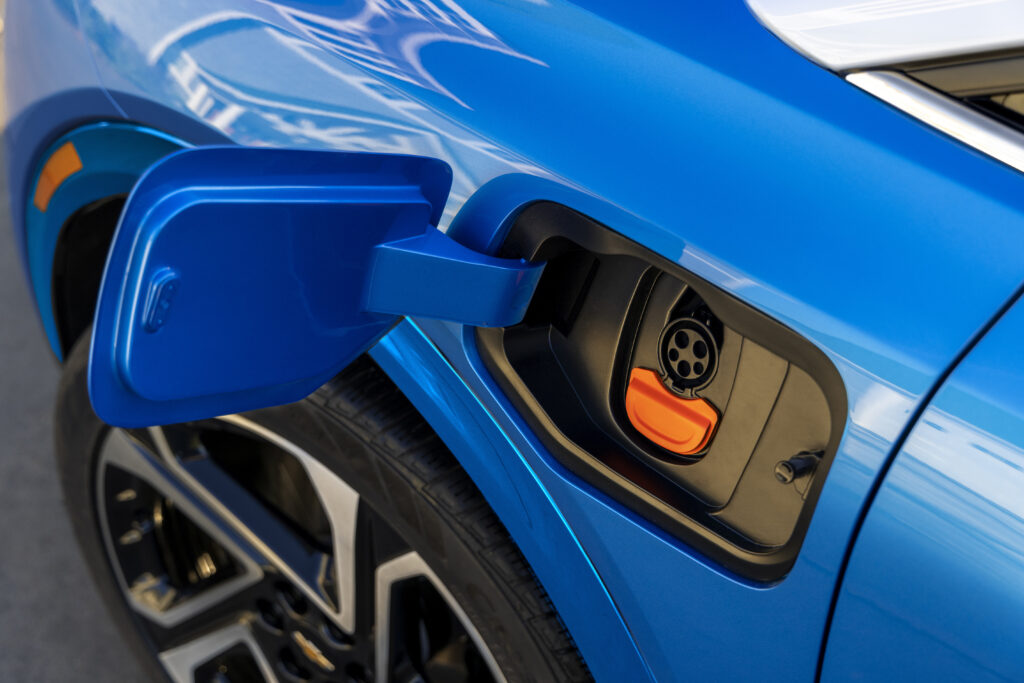
The Equinox EV will be available in standard and extended range battery options. Front-wheel drive will offer either battery capacity, and all-wheel drive will only be offered with the long-range pack. GM has not divulged the battery capacity figures, but we do know that the Equinox EV will be powered by the Ultium electric platform that GM engineered in partnership with LG Energy Solutions. That’s great news, as the Ultium battery has proven to be a game changer in the GMC Hummer EV and Cadillac Lyriq.
These are the unofficial range figures that GM shared with us:
On the performance side, the Equinox won’t compete with the more powerful Blazer EV, or many of the other segment competitors for that matter. It’s becoming clear the GM wants the Equinox to stand out for every day functionality and eye-catching affordability.
GM has not released official passenger and cargo volume numbers, but they did release some key numbers. The Equinox EV is larger than the gas-powered Equinox. It’s 7.4 inches longer overall with a wheelbase that is 9 inches wider. The much wider wheelbase creates more interior space, similar to how other automakers have make crossovers feel a lot more like larger SUVs. In terms of overall width, the EV is 3 inches wider than the gas version.
The Equinox EV is one inch shorter than the gas version, and that’s definitely for aerodynamic reasons.
We’ll update this page as more info becomes available.
This was the only letdown in my book, but it’s not a deal breaker. General Motors has often touted the next-generation capabilities of its Ultium batteries. More range, faster charging, better efficiency. The Ultium-powered Cadillac Lyriq charges at 190 kilowatts and the GMC Hummer EV peaks at 180 kW, so I was a bit confused to see that the Equinox EV is limited to 150 kilowatt charging speeds at a DC fast charger. It’s totally possible that CEO Mary Barra and the crew are taking a page out of Porsche’s EV gameplan: underpromise and overdeliver.
Even with 150 kw charging speeds, what matters more is the charging curve. Early testing with the Hummer EV shows that at 65% state of charge, the Hummer was still pulling 170 kilowatts. That’s a great sign. Combined with GM’s claimed ability for the Equinox EV to add 70 miles of range in 10 minutes, and it starts to sound like a pretty sweet deal for those who travel at a leisurely pace.
To summarize:
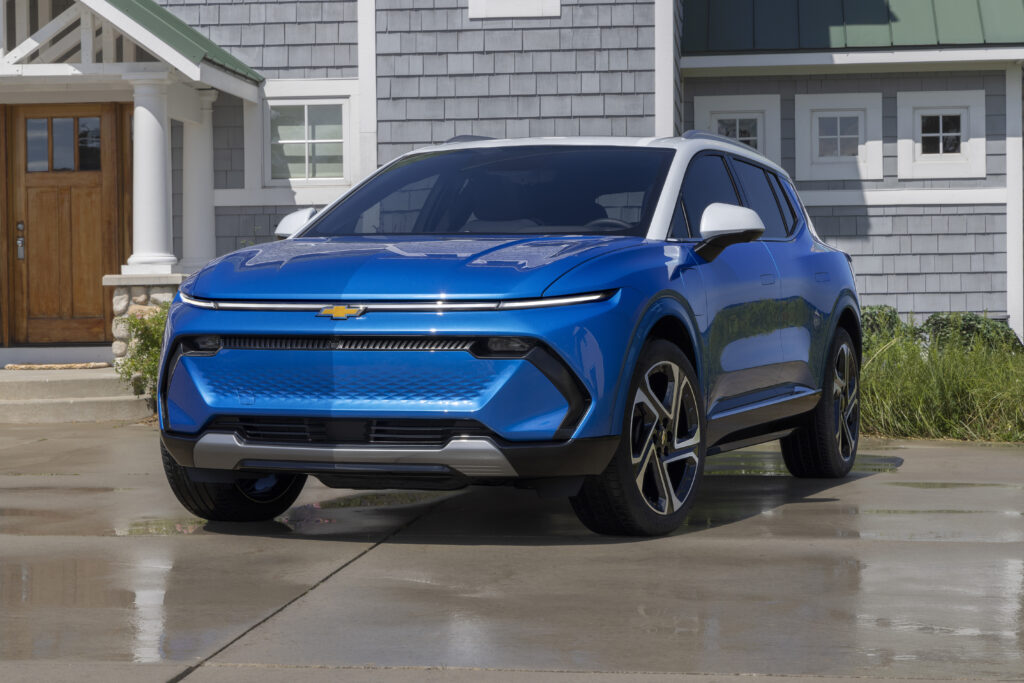
When charging any electric car at home, you have two options. No additional installation is required to simply ‘trickle-charge’, which means plugging in to a standard three-prong wall outlet. Commonly known as level one charging, this would add just 3-5 miles of range per hour, but drivers like myself find it to be plenty enough since I leave my car plugged in all night, and I don’t drive more than 30 miles on most days.
If you drive over 40 miles per day at least a few times each week, you’ll either want to install a level 2 home charger, or plan to spend time at public charging stations. A trained electrician will be needed to install a level 2 charger, and equipment plus labor can add up to a few thousand dollars. If you do go the level 2 route, you’ll be rewarded with MUCH faster home charging.
The Equinox EV will have some of the fastest home charging available from any EV, including luxury options. The Equinox’s standard level 2 charging is rated at 11.5 kilowatts, which is noticeably higher power than most EVs today (limited to 6 to 9 kilowatts at level 2). The higher trims of the Equinox EV will go even further to 19.2 kW home charging. With that, the Equinox RT and RS could add 51 miles of range per hour.
Don’t forget that EVs typically charge overnight while you sleep. It can be tempting to compare home charging times to a quick gas station fill-up, but life with an EV is altogether a different automotive lifestyle.
What comes standard: if you’re a fan of massive horizontal touchscreens, we have good news. The Equinox comes standard with an 11 inch infotainment touchscreen, a separate 11 inch digital gauge cluster, manual cloth seats, and 250 miles of estimated range from Chevrolet’s standard battery.

Standard safety features are generous. Standard Chevy Safety Assist includes:
Additional safety and assist features are available in higher trims, as detailed below.
Starting price: GM says “around $30,000 before incentives”; CarEdge expected price: $32,000
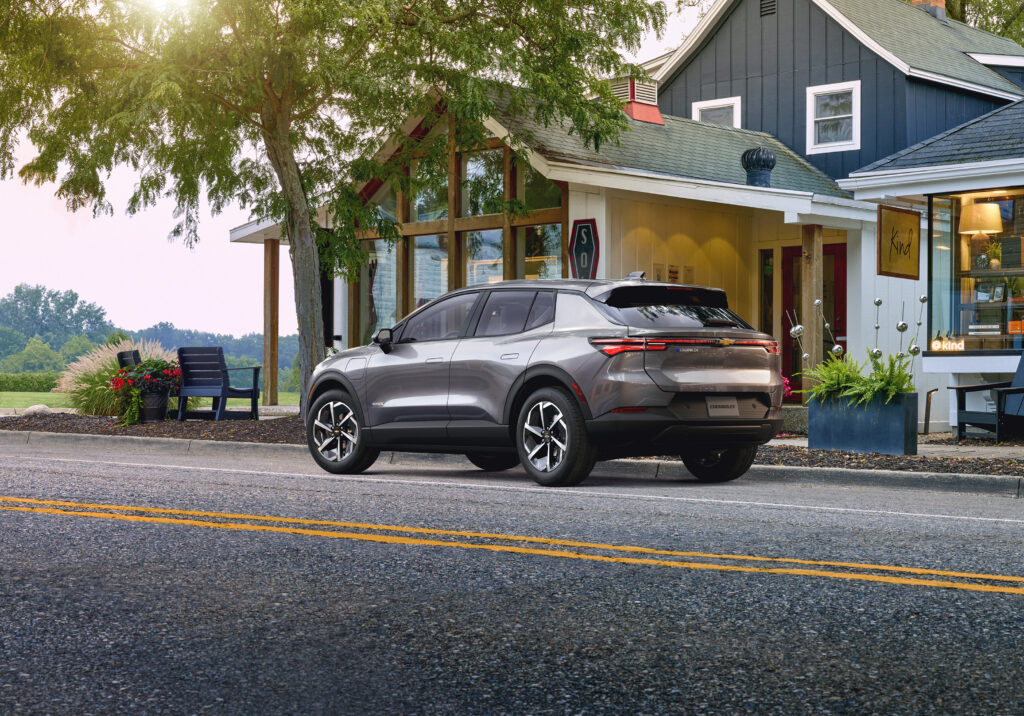
The 1LT includes all of the standard features mentioned above, including:
Starting price: TBD; CarEdge expected price: $37,000
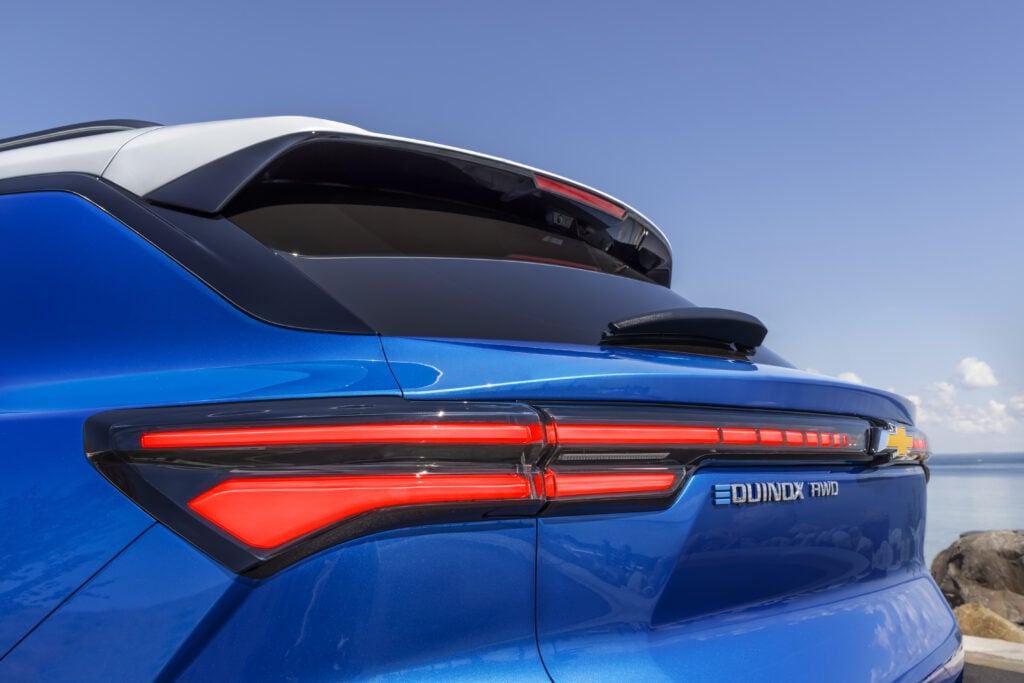
The Equinox 2LT is likely to be the option for the budget-conscious EV buyer who wants more range, improved looks, and niceties like heated seats. The 2LT adds:
Starting price: TBD; CarEdge expected price: $48,000 – $55,000

The 3LT has most of the bells and whistles, but pricing will likely undercut its nearest competitors like the Ford Mustang Mach-E and Kia EV6. Available options like all-wheel drive, heads-up display and SuperCruise are expected to drive a fully-loaded Equinox 3LT to a substantially higher price.
In addition to the features included in lower trims, the 3LT includes:
Starting price: TBD; CarEdge expected price: $52,000
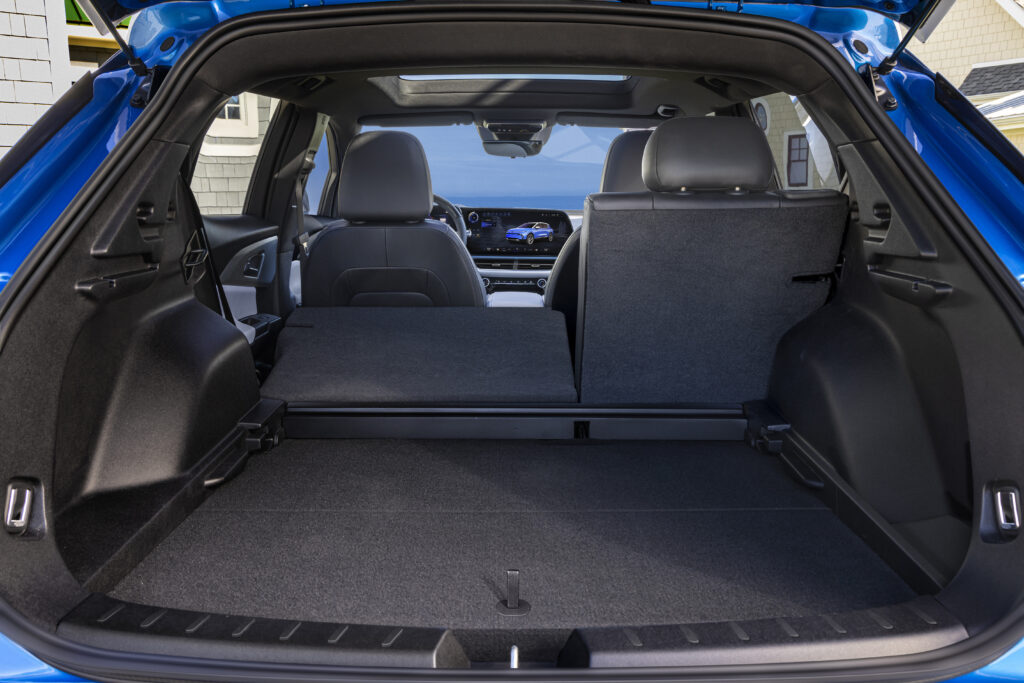
GM has decided to launch the electric Equinox in the fall of 2023 with the 2RS trim. This is the entry-level sporty trim option. It’s all about looks.
Starting price: TBD; CarEdge expected price: $60,000
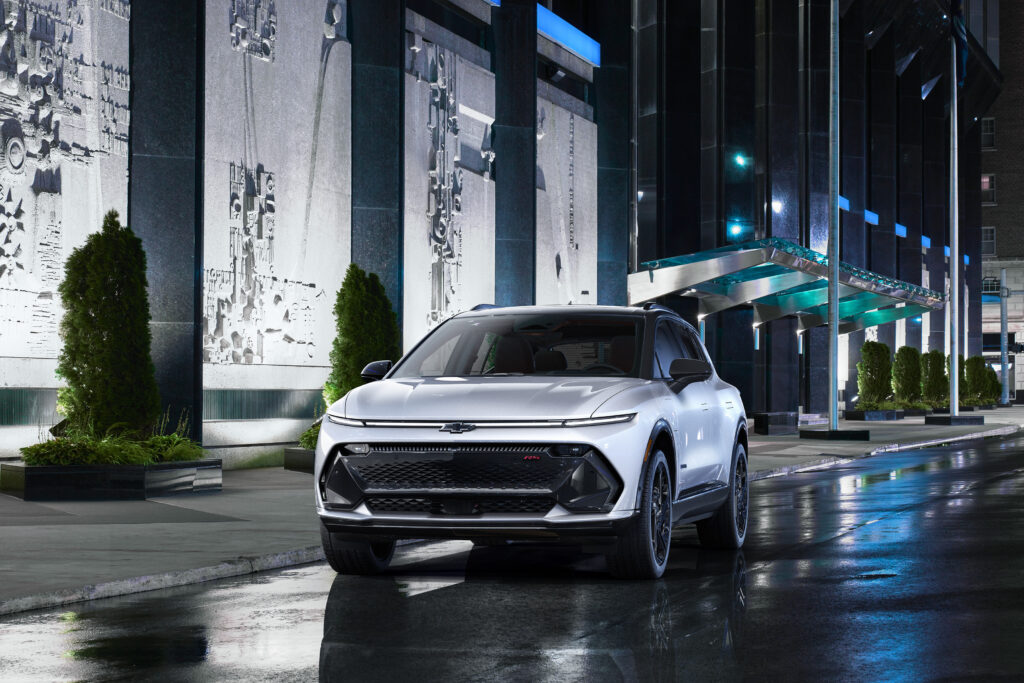
Available 19.2 kilowatt home charging is the real standout option with the 3RS. Aesthetically, this is as close as the Equinox EV gets to its sportier sibling, the 2022 Chevy Blazer SS EV.
The 3RS also includes:
Why do I think the higher trims will costs over $20,000 more than GM’s “aroud $30,000” starting price? It’s VERY difficult to make money selling EVs at $40,000 right now, not to mention ten grand cheaper. Ford recently admitted they aren’t turning a profit on the Equinox’s rival the Mustang Mach-E. Raw material prices have shot up by over 100% since 2020, and inflation is real.
In August of 2022, President Biden signed the Inflation Reduction Act of 2022 into law. With the new law arrived a completely revamped EV tax credit and future rebate. We’ve already covered the details of the new EV tax credit and which models will qualify, but here’s a summary of the biggest changes:
The Equinox EV will qualify for at least half ($3,750) of the new EV tax credit. GM plans to build it in Mexico with Ultium batteries made in America. Whether or not the Equinox qualifies for the full $7,500 will depend on where GM sources the lithium and other minerals in their batteries.
Yes, it’s true: With incentives, the 2024 Equinox EV may cost as little as $23,000. That would be a true turning point in EV adoption.
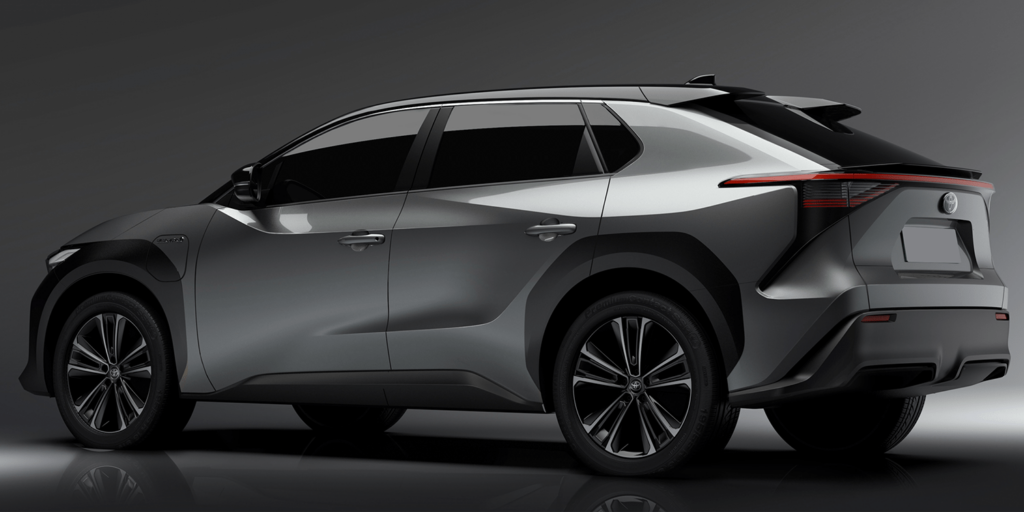
The 2024 Chevrolet Equinox EV will be up against stiff competition in this burgeoning electric crossover segment. These are some of the most popular competitors:
Stay tuned to the latest EV coverage by subscribing to our CarEdge Electric YouTube channel. Join the thousands of EV buyers, owners and enthusiasts in the Electric Vehicle forum at caredge.kinsta.cloud. Bring your questions, the community has answers!
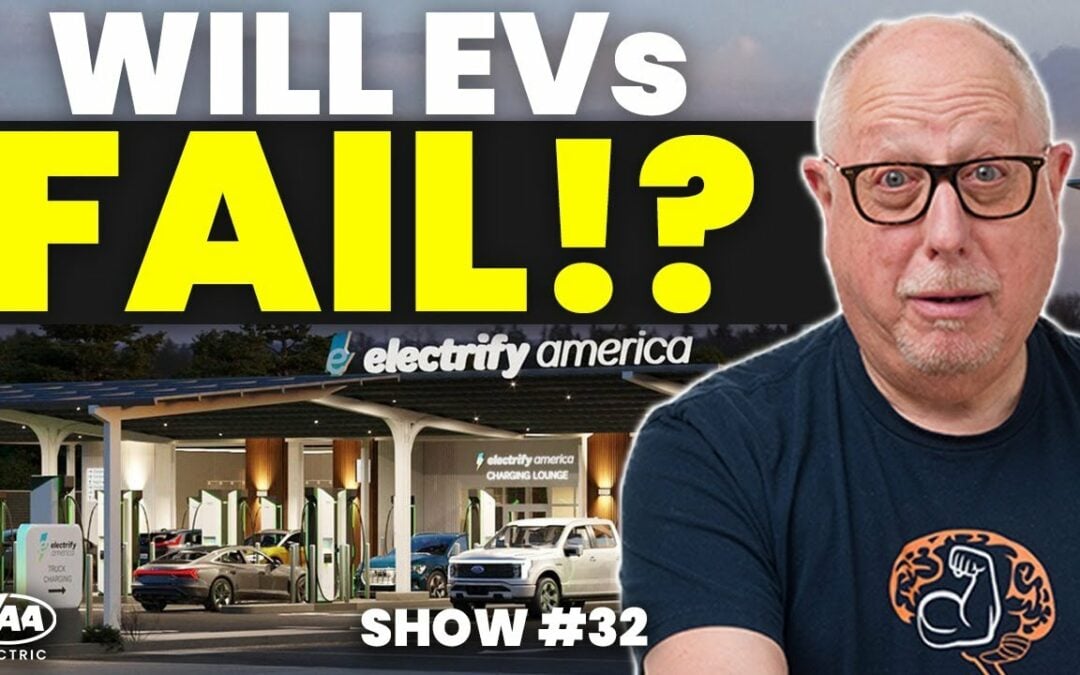
After four months of electric vehicle ownership, my perspectives about the mass transition to electric vehicles have evolved. I no longer think that everyone should run out and buy an EV right now (besides, that’s not possible). I have a greater understanding of the skepticism that accompanies the push to EVs. All-in-all, I feel that I now understand the arguments from both sides: electric vehicles are amazing, better for the planet (in the long run) and fun to drive, however EVs are not even close to being ready for mass adoption.
Automakers have committed well over half a trillion dollars to electric vehicle research and development, marketing and most importantly, charging infrastructure buildout. But the grid isn’t ready, charging providers aren’t ready, and the American public has a LOT to learn before making the switch. EVs could still fail, and bring down the automotive industry with them. We’d hate to see that. These are 5 things that must happen in this decade to prepare the world for electric mobility.
The average price paid for an EV surpassed $66,000, on par with the overall luxury segment.
For years and years, I touted the coming cost parity that would finally make EVs just as affordable as any other car. Industry experts always told us that EV price parity would come when battery costs dropped below $100 per kilowatt-hour. Just as that milestone arrived, the world was turned upside down by the COVID-19 pandemic.
Global factory shutdowns disrupted the supply chains that all automakers rely on, and most notably those related to semiconductor chip production. Without the parts to make the cars, electric vehicle growth was held back just as the public warmed up to them. Raw materials used in both vehicle and battery manufacturing increased in cost by over 100%, and many automakers have passed the premiums on to consumers.
Today, electric vehicles cost more, and inventory is slim. Kelley Blue Book’s June 2022 car price data shows that the average EV transaction was $66,000, $18,000 over the overall car market average of $48,000. One year ago, the average EV transaction was $52,486, or 10.8% less than it was in June of 2020. In short, EV prices are headed in the wrong direction just as automakers are getting serious about making them.
In the age of record smashing, here’s one that will give pause: In June, the estimated average monthly payment increased to $730, which is a new record high. A new car monthly payment now costs as much as rent in many parts of the country. We’re seeing more and more car payments over $1,000 a month. The insane records don’t end there.
More cars are being repossessed as more auto payments are going past-due. With the way things stand today, either EVs will have to become more affordable, or their luxury pricing will soon risk worsening the auto loan crisis.
Earlier this year, Rivian CEO and Founder RJ Scaringe predicted that battery shortages would be the next disruption that the automotive industry would face. In fact, automakers are already rationing the batteries they have, and those they have lined up. Ever wondered why there are so few electric full-sized SUVs? Building those at scale would require a lot more batteries.
The average EV contains $8,255 of raw materials according to CNBC. That’s more than double the amount in combustion-powered counterparts. President Biden has even authorized use of the Defense Production Act to aid the situation by increasing domestic EV production and related supply chains.
For the most part, automakers don’t make their own batteries. They rely on contracts with battery manufacturers like Panasonic, LG Chem, and CATL to supply what their lofty plans for electric vehicles will need. That’s changing little by little. Tesla has started to produce small quantities of its new 4680 battery cells next to Giga Austin.
General Motors just received a $2.5 BILLION dollar loan from the U.S. Department of Energy for manufacturing the Ultium battery in Tennessee. Slowly but surely, some OEMs are taking control of their own battery supply chains. This will be key to avoiding battery shortages.
EV market share SOARS in America. See the latest numbers.

Over 62% of Americans support building out a nationwide charging network, and 39% of American drivers are considering buying an electric vehicle next time they’re in the market for a car. Frugal drivers are welcoming the fuel savings, albeit at a higher upfront cost. At current residential electricity rates, charging up is equivalent to spending about $1.00 per gallon of gas. The most expensive public chargers may approach $2.50 per gallon equivalent.
However, many Americans live in a charging desert. What good is the EV revolution if there’s nowhere to charge? Most EV drivers plug in at home, but not everyone can do that. From apartment dwellers to rural residents, owning an EV simply isn’t viable if there aren’t chargers for road trips, family visits and work transportation needs. When it makes sense for consumers, electric vehicles offer plenty of benefits. Cheaper fuel, less maintenance, sporty performance and no tailpipe emissions to name a few. But EVs risk remaining a symbol of luxury and impracticality if it doesn’t get a lot easier to charge up in America.
2021’s Bipartisan Infrastructure Act included $7.5 billion for the build-out of a national charging network. In summary, federal funding is supposed to get the ball rolling, and the private sector will take it from there. EV charging stations, particularly DC fast chargers, are really expensive to install. On top of upfront costs, America’s electrical grid is not ready for the demand that would be generated by mass adoption of EVs.
The deadline is nearing for states to submit their plans for how they will spend their allocated funding for EV charging. Will they use the funding to install reliable, standardized fast charging stations along major transportation corridors and rural areas alike? We’ll soon find out.
The following are all things I’ve encountered at Electrify America charging stations:
We need to do better to educate EV buyers and prospective EV buyers about how to drive electric without the hassles. We can’t blame the consumer, EVs bring a very different ownership experience. But whose responsibility is it to educate drivers? The dealership? The automaker? The driver themself? Guys like me?
In reality, it will need to be all of the above. General Motors is leaning heavily on the success of what they call affordable EVs to dominate sales by the end of this decade. In the first real sign that OEMs might be taking their newfound responsibility seriously, Chevrolet just launched a great live chat and immersive experience on their website that is entirely devoted to educating the public about their EVs, with an emphasis on the ownership experience. We need more of that, and soon.
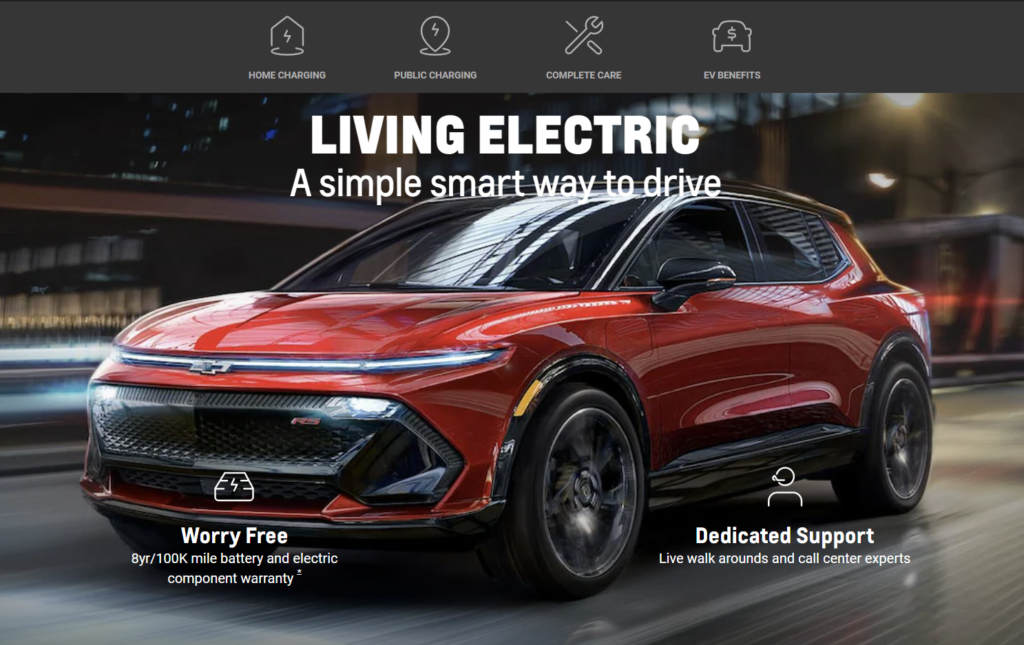
The woman I met who arrived at a charging station with 0% state of charge and no A/C should, in my opinion, be upset with her Kia dealer. She loved the car, but no one had explained to her how to plan for interstate travel in an EV. Dealers sell most vehicles in America, but the dealership sales model is under serious threat from the rising popularity of direct-to-consumer sales. Everyone wants to be Tesla. If legacy automakers are to stand a chance in the EV race, more OEMs need to prepare their dealer networks for the public education that comes along with selling EVs.
Does the lack of affordability, charging infrastructure and public awareness mean the electrification of the auto industry is doomed for failure? No, not at all. That’s because there’s still time to right wrongs, and to build out the nation’s charging infrastructure the right way. EVs are still under 6% market share in the U.S. (See the latest EV market share numbers here.) If these same problems persist when we exceed 15%, that will be real cause for concern.
It’s true that the electrical grid isn’t ready for mass adoption of EVs, but it’s getting there. Grid-scale battery megapacks (also pioneered by Tesla) are already being deployed to provide grid stability in times when the supply of electricity is not keeping up with demand. The sun only shines in the day, the wind is intermittent, but grid-scale batteries store and supply power from these renewable sources whenever they are most needed. Now, it’s like the sun is shining at night. These changes take time. Plus, the push for grid-scale battery storage could throw a wrench in EV battery supply chains. Nothing is certain, but things are moving in the right direction.

These are some innovations that have the potential to make electric vehicles more affordable with longer ranges, faster charging and improved safety. These innovations also make EV supply chains less damaging to the environment and less harmful to vulnerable communities worldwide.
How can the nation as a whole get to where it needs to be by, say, 2025? I’ll leave you with my own suggestion for legacy automakers and policymakers: don’t be afraid to learn from Tesla. A seamless, almost hassle-free EV ownership experience already exists in America, from plug-and-charge, reliable fast charging to the peace of mind that comes with the vast Supercharger network. I encourage all policymakers and engineers to learn from Tesla’s successful growth strategies. Will automakers and politicians have the courage to consult Elon Musk’s Tesla, or will they try to figure it all out on their own? What do you think?
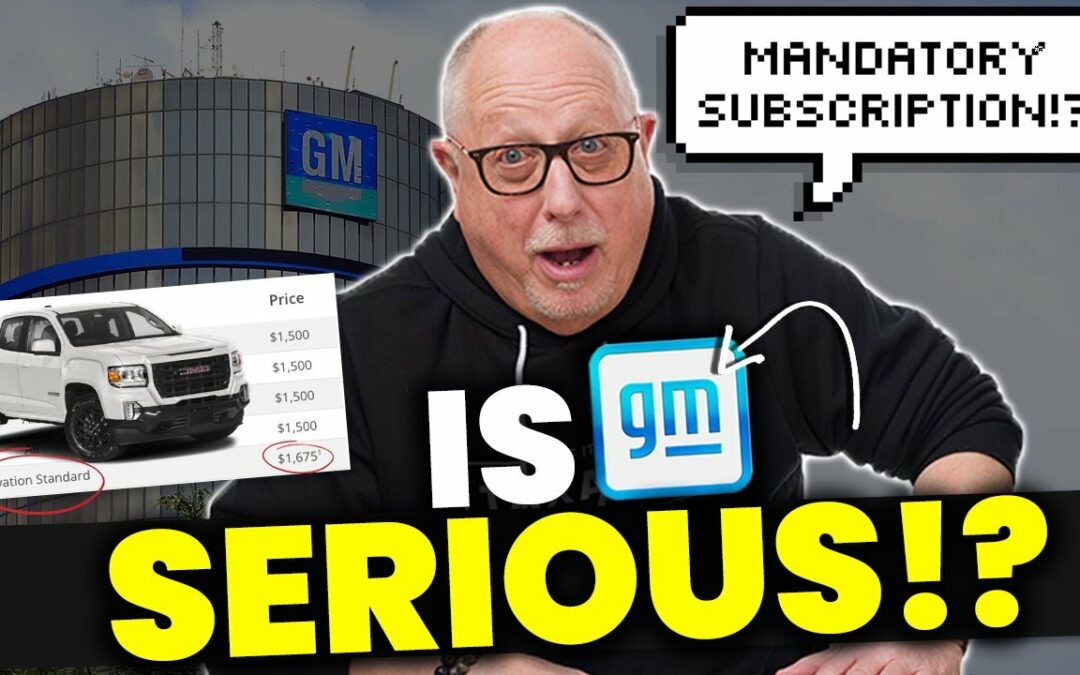
If you’re in the market for a GMC Sierra, Buick Enclave, or any of the two brand’s other models, we have some disappointing news for you. At what most would agree is the absolute worst time for automakers to pack more profits into car sales, Buick and GMC are forcing what they consider to be ‘value added’ subscriptions, and it’s not optional. The news from GM is just the latest example of automakers introducing what they call ‘software-derived revenue’, and executives are not being shy with their plans to introduce more of the same in the near future.
Would you consider forcing customers to pay for an add-on they may not want to be anti-consumer, or is that just how the world works these days? It’s one thing to sell a new vehicle with a trial subscription, but it’s another to add a thousand dollars to the price tag for a software subscription the customer may never use.
As of July, General Motors is adding between $905 and $1,675 to Buick and GMC price tags for a 3-year subscription to GM’s OnStar Connected Services. To the uninitiated, this may sound like yet another add-on. But the thing is, GM says it’s not optional. No matter whether you want a 36 month subscription to OnStar or not, GMC and Buick customers will have to pay for it. The only model to receive the full suite of software free of additional charge is the $100,000-plus GMC Hummer EV.
A GM spokesperson confirmed the move to GM Authority, saying, “This offering provides our owners with a full suite of OnStar and Connected Services for three years, providing them with more time to enjoy services such as remote key fob, Wi-Fi data and OnStar safety services. By including this plan as standard equipment on the vehicle, it provides more customer value and a more seamless onboarding experience.”
Manufacturer incentives are already at record lows, and new car inventory is increasing at a snail’s pace. How could you push back against these new forced add-ons? Considering that GMC and Buick’s OnStar ‘Connected Services’ mandatory subscription is tacked on by the automakers themselves, dealers are not likely to negotiate on it. What we can hope for is the return of other kinds of incentives and deals. With more and more signs of the car price bubble beginning to burst, it’s too early to lose hope on that front.
It’s likely that GM will lose some customers for life as a result of this decision. Look at some of the comments we received on our YouTube video covering this topic:
Consumers are fed up, and with good reason. General Motors isn’t the only automaker trying to make car subscriptions mainstream; Volkswagen, Stellantis, Ford, and BMW all have their eyes on increasing software and subscription revenues.
Welcome to microtransaction hell. BMW wants you to subscribe to your heated seats in your new 3 series:
The car will come with all the necessary components, but payment is needed to remove a software block. How wild is that?
GM is taking the tact of “subscriptions are mandatory,” while BMW is shipping cars to customers with all of the necessary hardware to offer functionality, yet imposing a software “paywall”.
So far BMW has not launched this program in the United States, however it’s likely they will at some point. More on this from The Verge.
GM surely isn’t the first to say it or even do it, but this is the boldest forced subscription we’ve seen from a legacy automaker to date. For a decade, Tesla has been offering acceleration boosts, more range, and autonomous driving features as software ‘upgrades’ that controversially don’t get passed on to future owners. Clearly, many buyers don’t mind, as Tesla has dominated EV and overall luxury sales.
Is this yet another example of legacy OEMs going after Tesla, or is it a ploy to introduce new revenue streams for the sake of simply making more money, and charging more for vehicles? Fortunately, there’s no need to speculate, because multiple automaker executives have already shared their intentions with the public.
Not looking forward to paying a monthly subscription for conveniences like remote start or advanced cruise control? Me either. Automotive News Europe recently reported that Stellantis is launching a $23 billion software push to get into the auto subscription business.
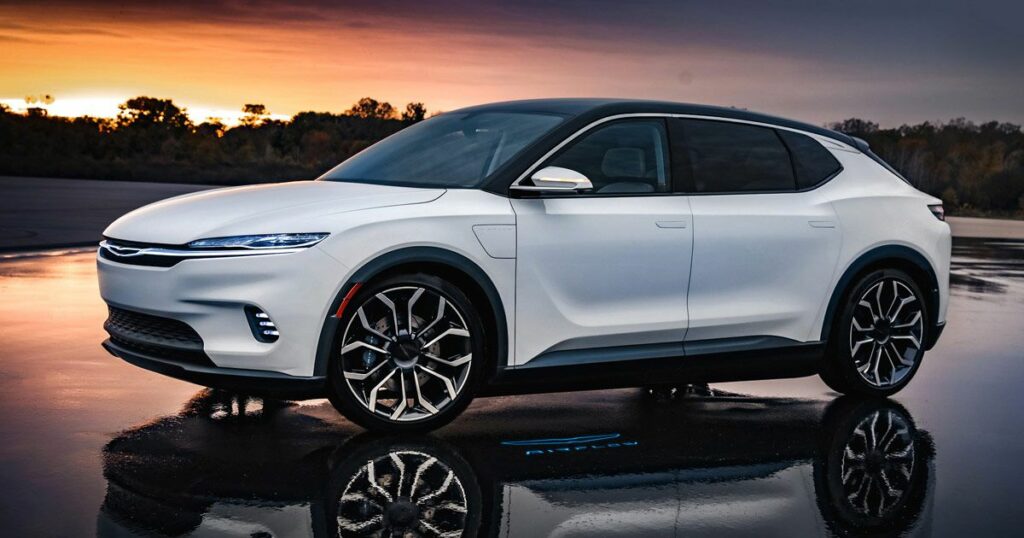
Just how big of a business will auto subscription services become? Stellantis, the sixth-largest automaker in the world, says it plans to make $4.5 billion in annual revenue from software subscriptions in the near future. How soon? Mamatha Chamarthi, the head of Stellantis’ software business, says the company can reach their goal by 2026.
Stellantis CEO Carlos Tavares chimed in too. He’s confident that Stellantis’ software business will generate high margins more like those at tech companies than the traditional auto business. He added that in the company’s view, software-based services and subscriptions will help vehicles last longer and have higher resale values. Do you buy that?
The Blue Oval is getting into pay-to-play automotive services, too. The Ford Mustang Mach-E and F-150 Lightning electric vehicles are Ford’s first mass-produced vehicles to be fully-capable of over-the-air updates, and now Ford plans to turn their latest innovation into new revenue streams.
Wes Sherwood of Ford Communications recently told Pickup Truck Talk that Ford knows the value of what they’re bringing to their models. “These subscription services are big business for automakers – to the tune of billions. We see connected vehicle services as a huge opportunity, which is why we are transforming Ford into a software-led company and, for customers, ‘always-on’ ownership experiences where before our relationships were periodic (sales and some service). In fact, we see this market growing to $20 billion by 2030.”
If you want to be a beta tester for Tesla’s ‘Full Self-Driving”, you’ll have to add $12,000 to the price of that shiny new EV. However, Volkswagen, one of Tesla’s most admiring competitors, envisions a subscription-based payment plan for autonomous driving capabilities.
Volkswagen Group’s software unit Cariad believes pay-as-you-go autonomous driving is one way the automaker can monetize future software developments.
“There is a new business model already out there — a subscription model, or function-on-demand — where you can drive autonomously if you want, for the next 50 miles. We would support that, “ Cariad CEO Dirk Hilgenberg told Bloomberg.
Hilgenberg said it was possible to see that the service would allow the automaker the opportunity to offer other services to consumers who are freed from driving the vehicle.
“You have to make sure to have what we call a digital services platform that lets the outside world in — Google, Apple, Amazon — where you can bring your accounts to stream and be entertained, or where you can work with office products, do a videoconference or prepare yourself for the next meeting. This is the product we want to sell. The product is our platform,” he said.